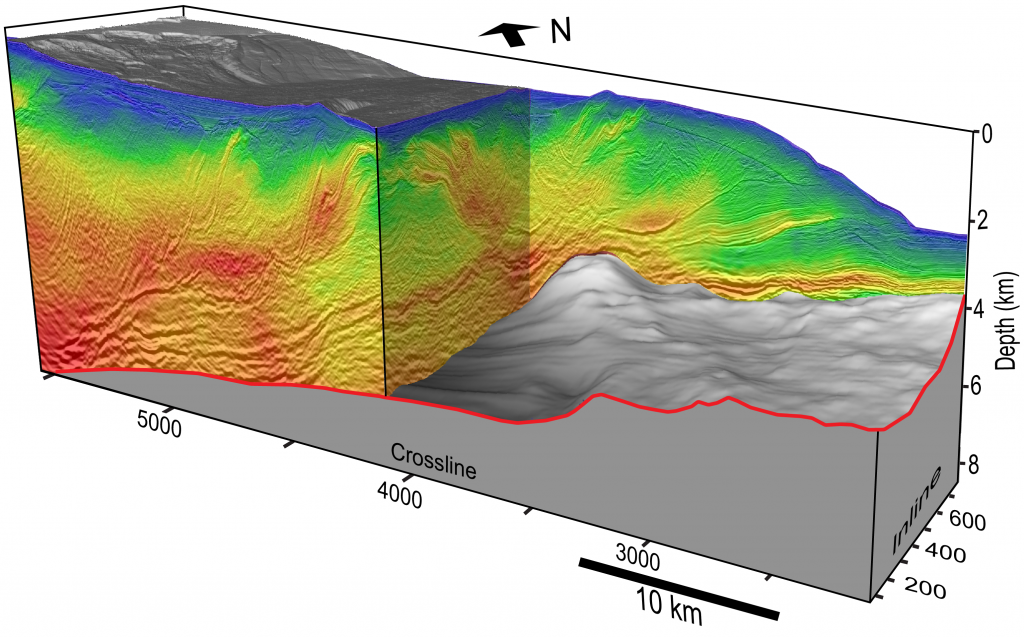Researchers have discovered a sea’s worth of water locked within the sediment and rock of a lost volcanic plateau that’s now deep in the Earth’s crust. Revealed by a 3D seismic image, the water lies two miles under the ocean floor off the coast of New Zealand, where it may be dampening a major earthquake… Continue Reading Discovery of Massive Undersea Water Reservoir Could Explain New Zealand’s Mysterious Slow Earthquakes
Sinking Seamount Offers Clues to Slow Motion Earthquakes
Scientists have long puzzled over what happens when seamounts — mountains and volcanoes on the seafloor — are pulled into subduction zones. Now, new research from The University of Texas at Austin shows that when seamounts sink, they leave behind a trail of soft sediments. The researchers think the sediment patches help tectonic pressure escape… Continue Reading Sinking Seamount Offers Clues to Slow Motion Earthquakes
Scientists Plan Major Research Program to Understand Earth’s Most Dangerous Hazards
The University of Texas at Austin has joined leading scientists on a bold new effort to understand Earth’s largest earthquakes and volcanic eruptions. The plans were detailed in a new report published Nov. 7 with the backing of 55 universities. Demian Saffer, the director of the University of Texas Institute for Geophysics (UTIG) and one… Continue Reading Scientists Plan Major Research Program to Understand Earth’s Most Dangerous Hazards
UT Graduate Student Research Solves Plate Tectonics Mystery
The longstanding enigma of how tectonic plates can break Earth’s rock-hard shell may have been solved by a recent graduate student at The University of Texas at Austin who caught the Earth in the act of starting a new tectonic conveyor belt off the coast of New Zealand. The world’s tectonic conveyor belts – called… Continue Reading UT Graduate Student Research Solves Plate Tectonics Mystery
Big Data Imaging Shows Rock’s Big Role in Channeling Earthquakes in Japan
Thanks to 20 years of seismic data processed through one of the world’s most powerful supercomputers, scientists have created the first complete, 3D visualization of a mountain-size rock called the Kumano Pluton buried miles beneath the coast of southern Japan. They can now see the rock could be acting like a lightning rod for the… Continue Reading Big Data Imaging Shows Rock’s Big Role in Channeling Earthquakes in Japan





